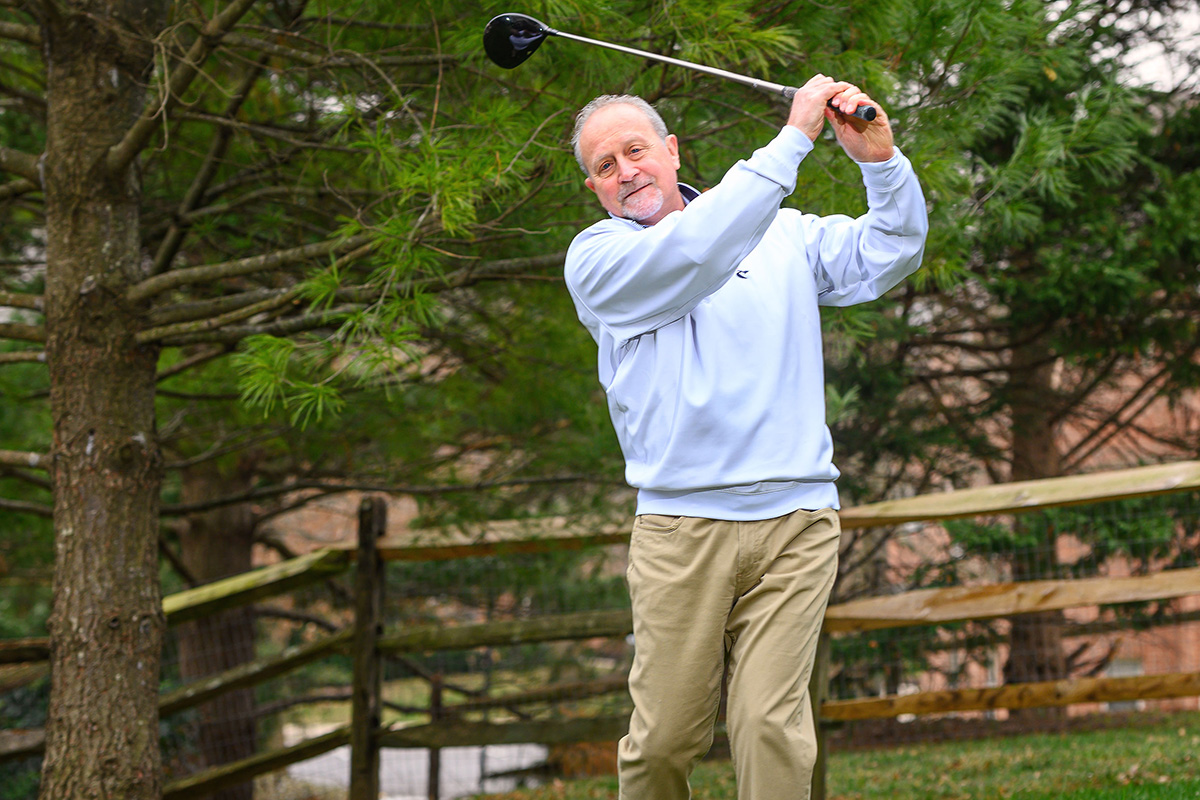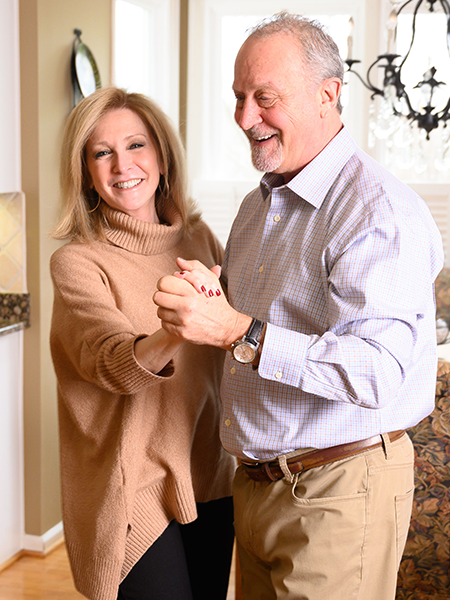“It’s been a miracle,” says Richard Weiss of his swift recovery.

For Richard Weiss, the pain in his back had become unbearable. After having an MRI, he was diagnosed with lumbar stenosis, a condition where the changing and narrowing of the spinal canal put pressure on the nerves in the lower back. This condition can cause incredible pain, which Richard felt constantly throughout the day. The most excruciating movement was going from sitting to standing. “Once I sat down and had to get back up, it was very difficult to get moving again,” he says. “I was having severe pain and problems just being able to walk.”
Richard, 62, is a busy commercial real estate professional, and he found himself reluctant to even leave his office for lunch because getting up from his desk was so difficult. After several months of debilitating pain, he finally reached his breaking point. He met with several doctors who all recommended fusion surgery, but he didn’t want to have a major procedure and long recovery.

Dr. Olan
Eager to find an alternative solution, he sought another opinion from Wayne Olan, MD, Director of Minimally Invasive Neurosurgery at the GW Spine and Pain Center. That’s when he learned that he was a candidate for a better kind of treatment for him, which would minimize his time away from work and his busy life.
A less-invasive approach
Minimally invasive treatment with the Superion® implant is offered at GW Hospital to treat lumbar stenosis and provide symptom relief. The outpatient procedure takes only about 20 minutes, with around a 90-minute recovery and no stitches to remove, Dr. Olan says. During the procedure, the Superion implant is placed between the bones in the lower back to hold them open and relieve pressure on the affected nerves.

“GW was one of the early users of Superion. We did the first case in the mid-Atlantic region at GW Hospital,” Dr. Olan says. While this approach is not new, technology continues to advance and improve patient outcomes.
Richard says that after his outpatient Superion procedure, he was able to walk out of the hospital that day with no issues. “I took it easy for the day and went to work the next day,” he says. “It was amazing.” That Friday, he attended his nephew’s wedding and was even able to dance with his wife. “I was 100 percent pain-free,” he says.
Today, he’s looking forward to playing golf and enjoying everyday activities without pain. Even more importantly, he’s a new grandfather and can now enjoy holding his first grandson without limitations. Richard says the turnaround he experienced was miraculous. “I am a walking example of how this minimally invasive procedure was 100 percent successful.”
Symptoms of lumbar stenosis
They can include difficulty walking and standing, as well as groin pain and numbness, weakness, cramping and pain in the legs or buttocks.Learn More About Lumbar Stenosis
Individual results may vary. There are risks associated with any surgical procedure. Talk with your doctor about these risks to find out if minimally invasive surgery is right for you.
